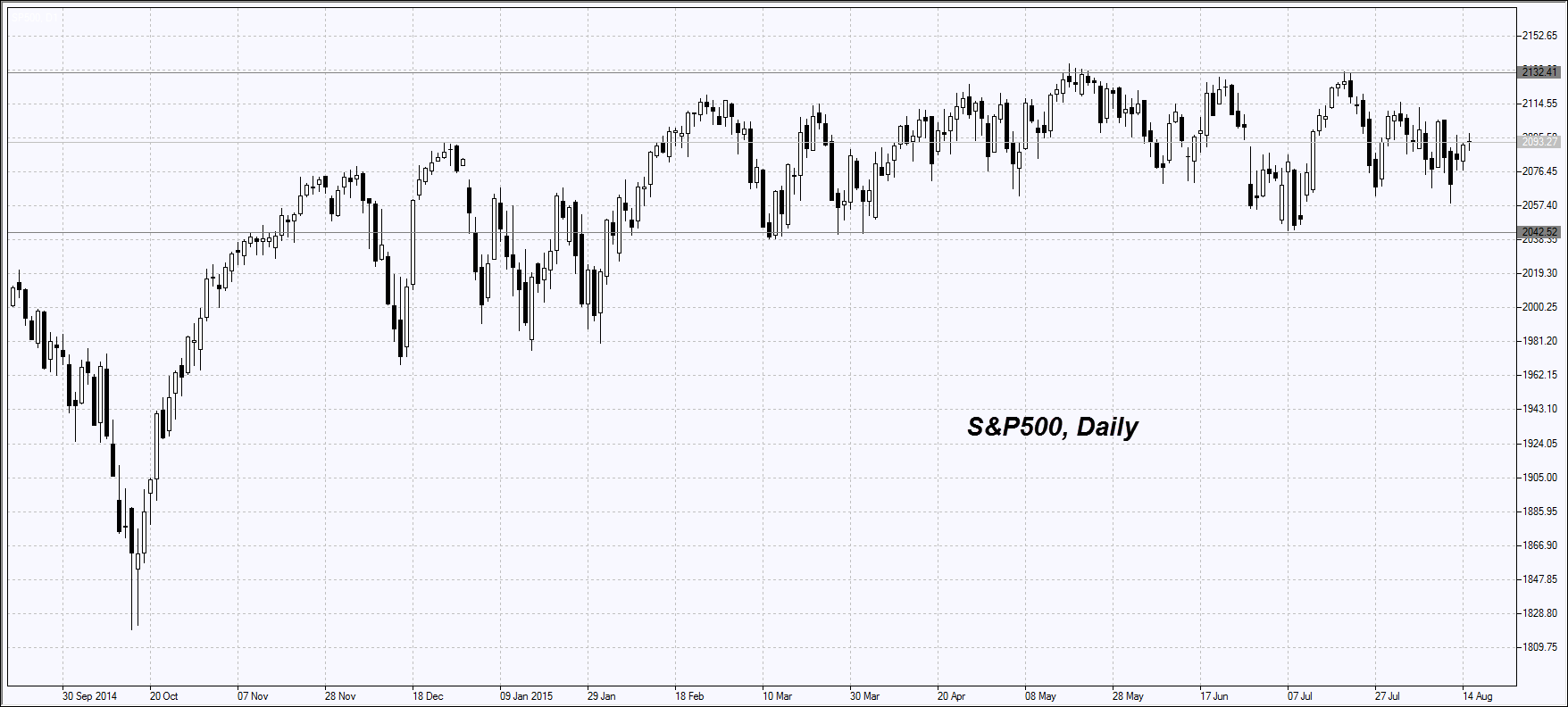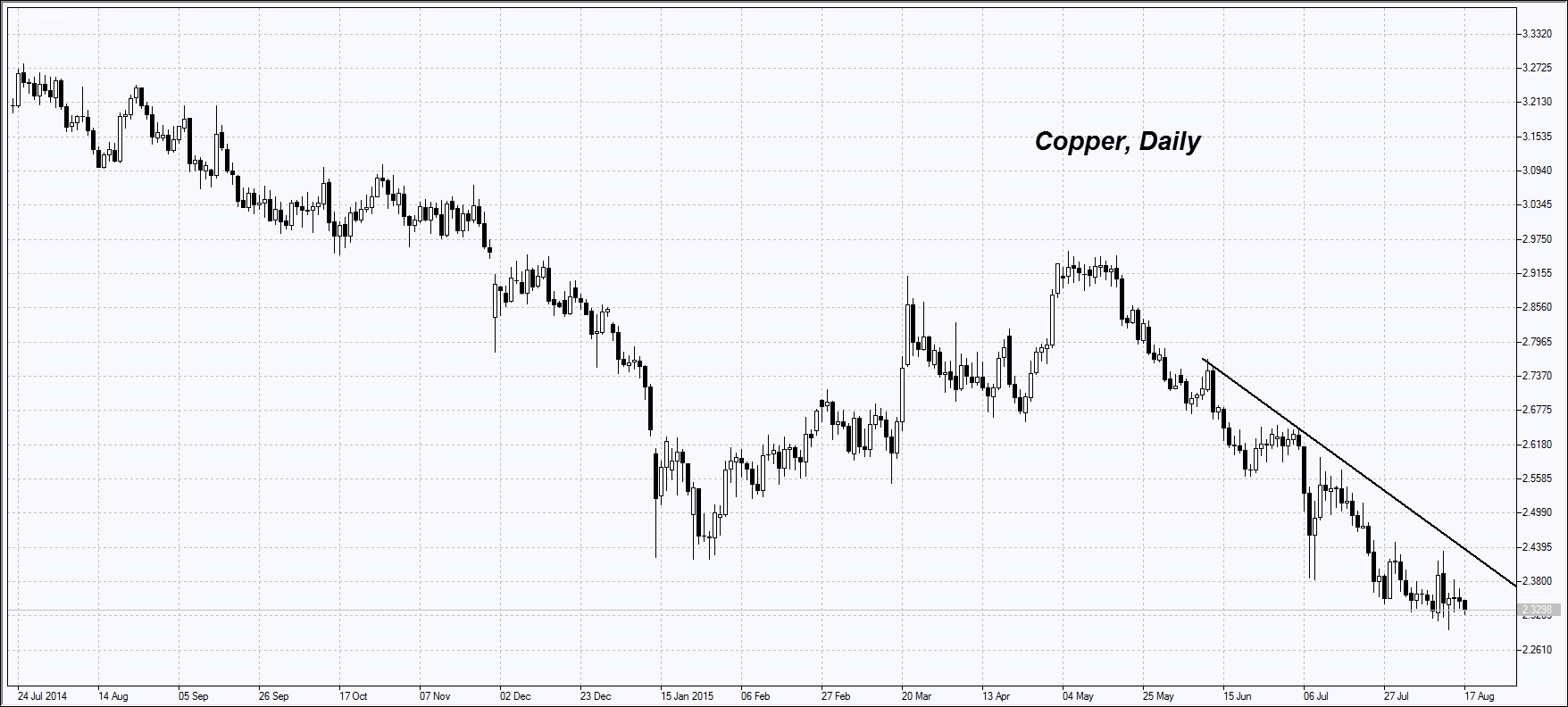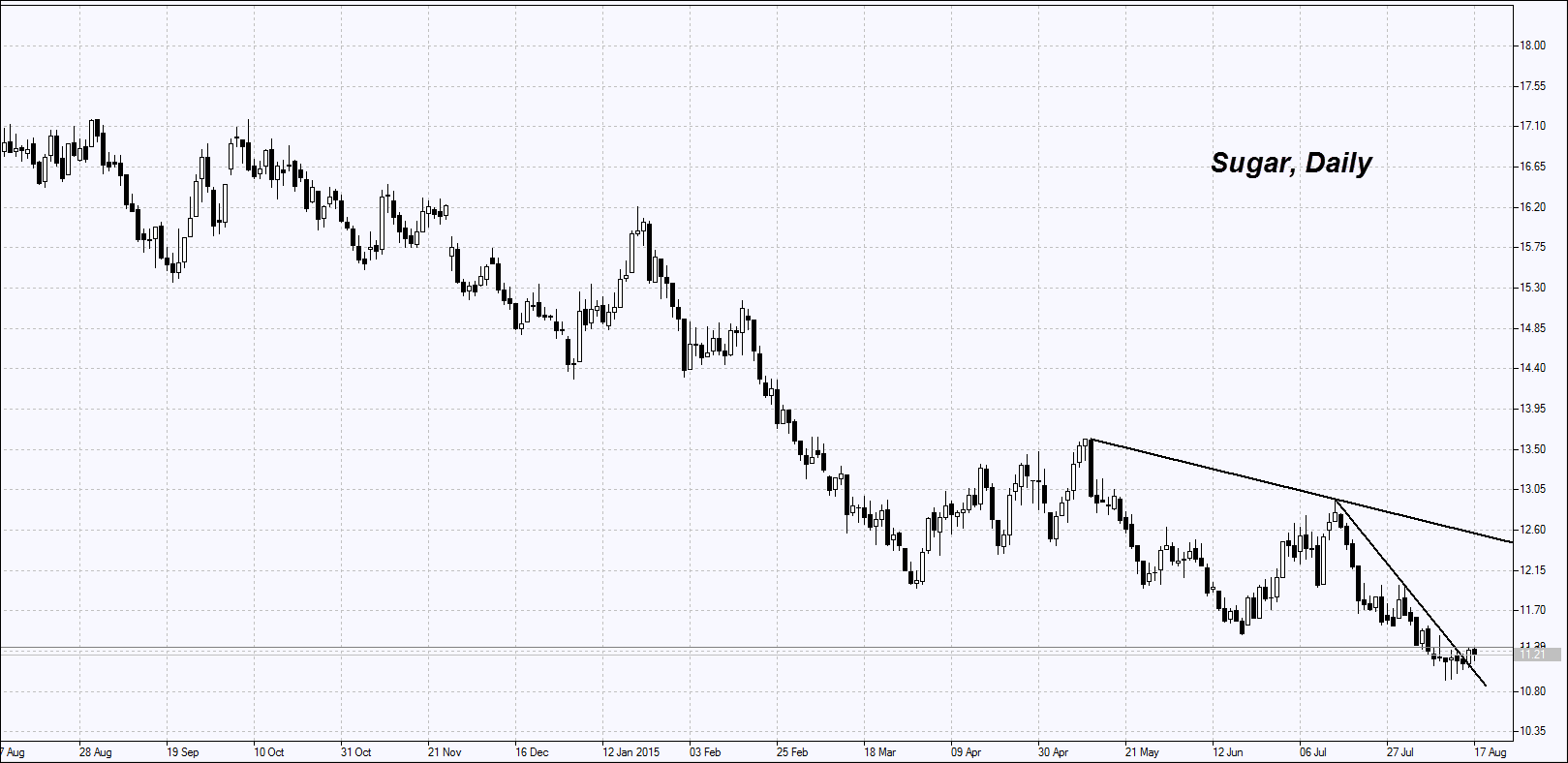American stock indices edged slightly higher on Friday due to good reports by the Nordstrom (NYSE:JWN) and J.C. Penney (NYSE:JCP) companies. Besides, Producer Prices in July have increased for 3 straight months, while GDP has risen 0.6% to an 8-month high. American indices have generally been traded in a range year-to-date, but last week they advanced: Dow Jones added 0.6%, S&P 500 gained 0.7% and Nasdaq climbed 0.1%. The US dollar slightly strengthened on Friday. Investors believe that the yuan devaluation stopped. Consequently, the Fed rate hike September 17 became more likely. The American stocks trade volume was 27% below the monthly average on Friday, making 5.2bln shares. No important macroeconomic data are expected today in the US.
European stocks restrained losses; today, they have been traded in a narrow range. The market was supported by ASE Index, which increased 1.4% as Angela Merkel stated that International Monetary Fund would likely join the third Greek bailout program. Market participants assumed that it would not take efforts from the European Union, so the euro slipped. The FTSEurofirst 300 stock index slumped 3% last week. Investors are concerned that the devaluated yuan may make Chinese products more competitive as compared to European ones. However, several companies showed good dynamics. The Barclays (LONDON:BARC) investment bank raised BMW (XETRA:BMWG) shares forecast; they added 1.5%. Hennes & Mauritz (OTC:HNNMY) retail company shares gained 1.6% due to a strong corporate report. Alstom (PARIS:ALSO) French company stocks expanded 5.6% due to the probable merger and acquisition deal with General Electric (NYSE:GE). Airbus (OTC:EADSY) closed up 1.5% as the largest Indian IndiGo company reported it would buy 250 Airbus planes.
Nikkei has edged slightly higher for 3 consequent days. The second quarter GDP was released this morning in Japan. It contracted 1.6% year-over-year, which was less than the expected 1.9% drop. It was the first time since the third quarter in 2014 that the Japanese economy contracted. It happened partly because personal consumption decreased 0.8%. The parameter accounts for 60% of GDP. It fell for the first time since the second quarter in 2014, when the sales tax was raised. Now market participants expect Bank of Japan to cut the current financial year GDP forecast by 1.5%. It may happen in October. Another bunch of important statistics will be released in Japan Wednesday morning.
The decreasing Japanese GDP pushed oil quotes to a six-year low; the country is the third largest oil importer in the world after the USA and China.
Grain futures have already reacted to the negative monthly report by US Department of Agriculture and are now driven by weather forecasts. Analysts expect crops in Canada to fall 13% as compared to the previous season. It may support grain prices.
Copper quotes have been falling behind gold and silver. China increased copper production by 4.5% as compared to July. Traders believe that it happened mainly because of copper prices falling to their 6-year lowest. To be noted, while the yuan has been devaluating, the demand for gold in China increased. We remind that in the second quarter it dropped to a six-year minimum.
We assume that the USD/BRL currency pair may fall below 3.5 reals per dollar. It may underpin sugar and coffee prices.
